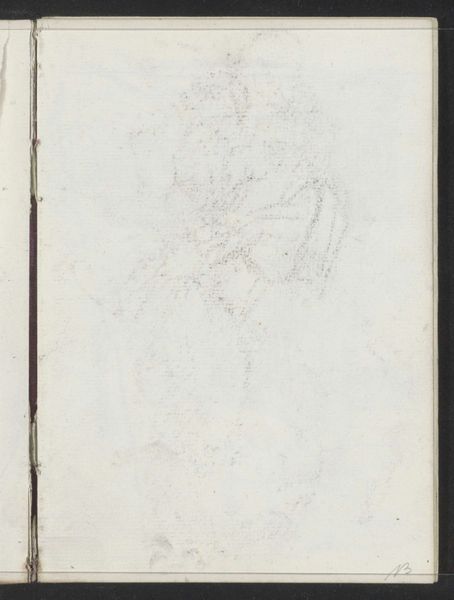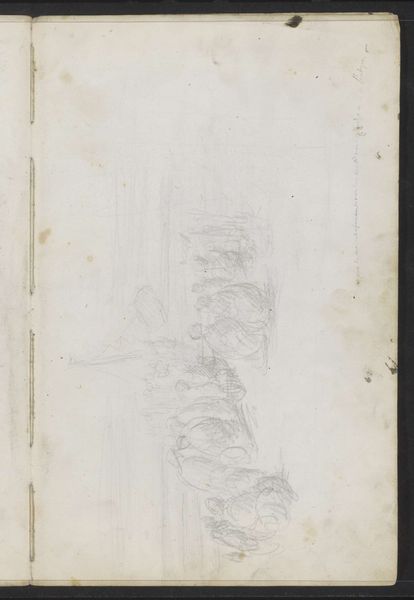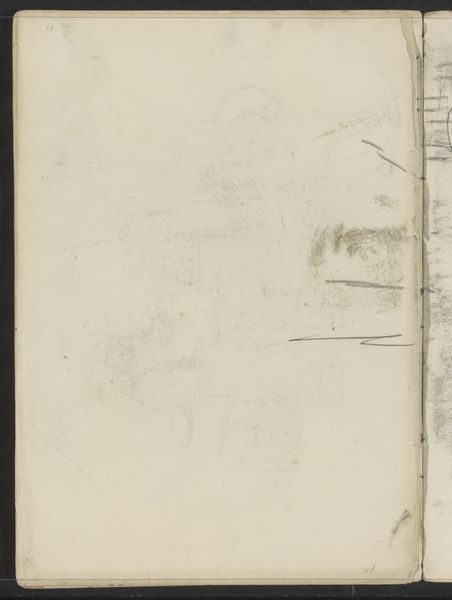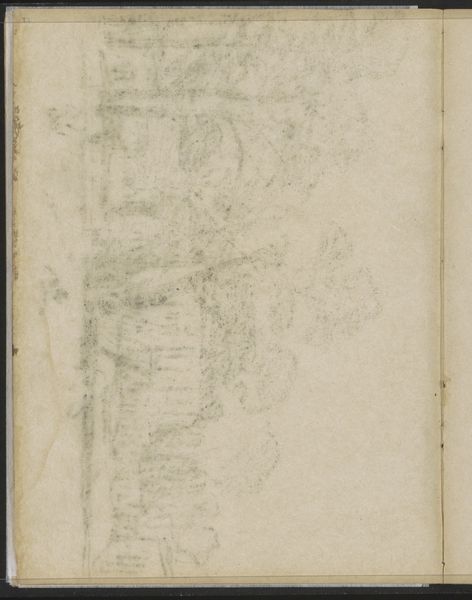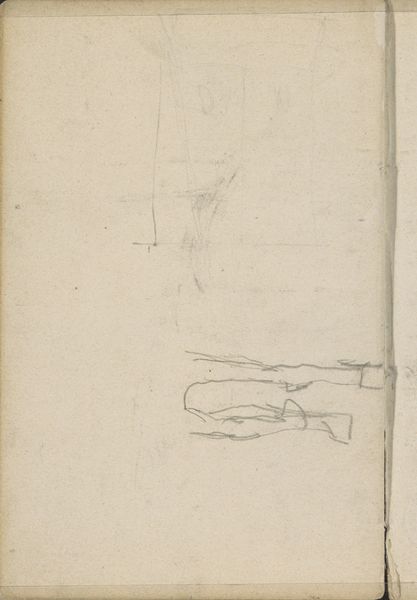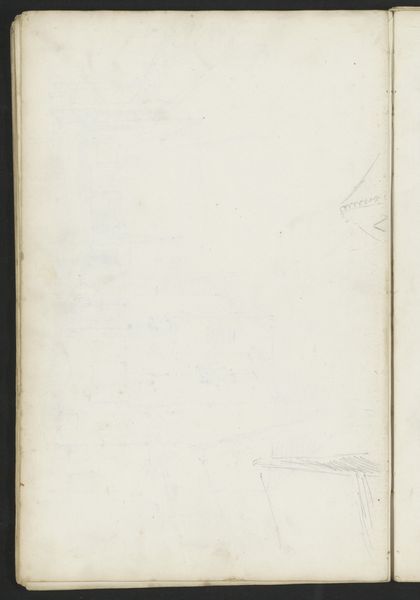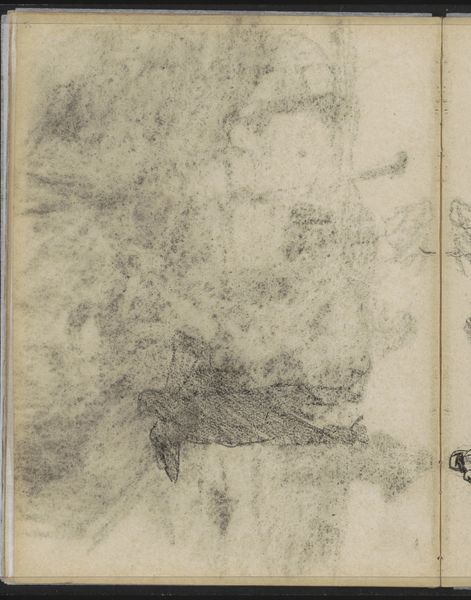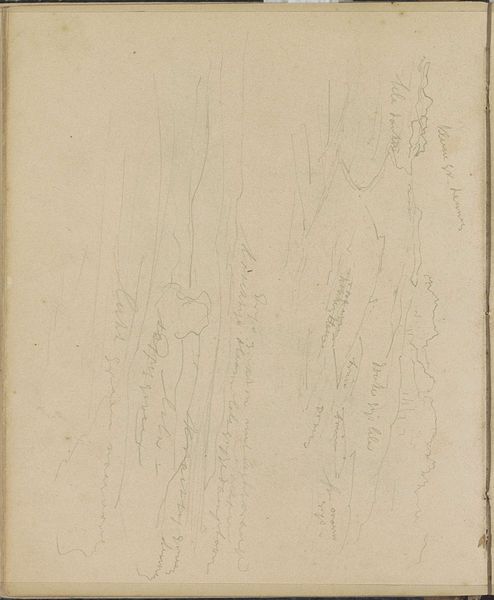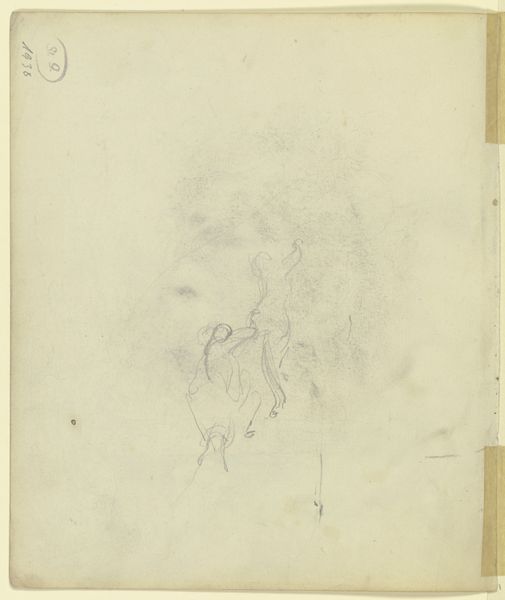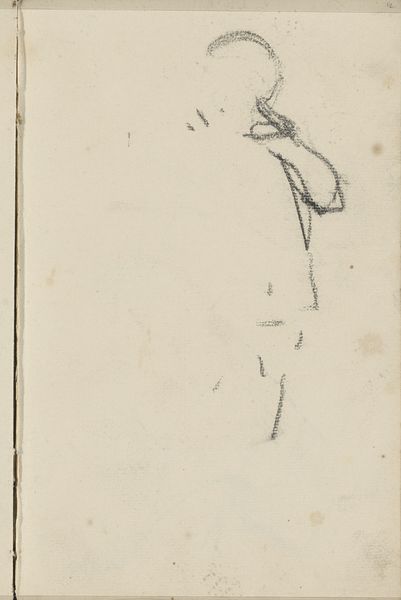
Copyright: Rijks Museum: Open Domain
Editor: Here we have "Studie," a sketch dating roughly from 1886 to 1934, created by Isaac Israels. It appears to be pencil and ink on toned paper. The wispy lines give it a sense of fragility and incompleteness, almost ephemeral. What do you see in this piece from a formalist perspective? Curator: I see a fascinating exercise in line and form. Note how Israels utilizes the inherent qualities of the media. The varying pressure of the pencil creates a subtle depth, while the ink adds definition and contrast. The composition is inherently abstract, refusing to cohere into a recognizable object. Editor: So, the power is in the materials and their application, rather than any intended representation? Curator: Precisely. The formal relationships are key. Consider the texture of the aged paper itself – its visual presence actively contributes to the aesthetic experience. The deliberate layering of lines invites the eye to move across the surface, searching for connections and patterns within the visual field. This invites an active role from the viewer, thus disrupting our reliance on mimesis to find satisfaction. Editor: That makes a lot of sense. I hadn’t thought about the paper itself as being a deliberate part of the composition, but now I see how its tone and texture contribute. It’s like another layer of meaning beyond the lines. Curator: It highlights how form is inherently intertwined with meaning, wouldn’t you agree? By exploring the qualities of the chosen medium, we gain an understanding of artistic intention that bypasses traditional narrative interpretations. Editor: Yes, I see that now. Thinking about the work in terms of just lines, textures, and the interplay of the pencil and ink, creates a different kind of engagement. Thank you for this insight! Curator: A close look at the formal structures offers powerful methods for interpretation. A valuable exercise, indeed.
Comments
No comments
Be the first to comment and join the conversation on the ultimate creative platform.
